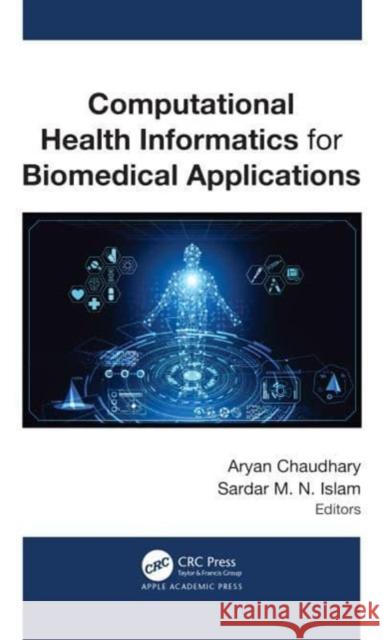Computational Health Informatics for Biomedical Applications » książka
Computational Health Informatics for Biomedical Applications
ISBN-13: 9781774912539 / Angielski
Explores computational tactics as applied to the development of biomedical applications, using artificial intelligence, machine learning, signal analysis, computer-aided design, robotics and automation, biomedical imaging, telemedicine, and other technologies.
The explosion of technology in healthcare in recent years has rapidly changed the healthcare sector. Technologies such as artificial intelligence and machine learning along with the integration of the Internet of Medical Things (IoMT) have evolved to tackle the need for remote healthcare systems, augmenting them in a self-sustainable way. This new volume explores computational tactics as applied to the development of biomedical applications, using artificial intelligence, machine learning, signal analysis, computer-aided design, robotics and automation, biomedical imaging, telemedicine, and other technologies. The book aims to provide a solid framework to provide the modern class of medical gearheads with information on the innovative applications of computational mechanisms for improving and expediting patient-friendly automation in healthcare.
The volume provides an overview of the advancements in modern technology for diagnosing major life-threatening diseases, including using photonic MEMS sensors, biomedical signal processing, 1D photonic crystal-based distributed Bragg reflectors (DBRs), and biosensor chips used to detect foreign bodies, such as cancer cells, or infected stages of blood cells for quick medical diagnosis.
The book discusses employing predictive analysis using AI, ML, and DL for tracking diseases, predicting their progress, and designing tactics as applied to heart disease, coronavirus, and many other ailments. It looks at various machine learning methods, grouping and association rules, vector machine assistance, and evolutionary algorithms. Also discussed is the evolution and implementation of information and communication technologies in healthcare delivery, which hold enormous promise for patients, providers, and payers in future healthcare systems. Other topics include using drones in health centers, such as for drug distribution and other purposes; using powerful artificial intelligence algorithms that can reveal clinically significant information hidden in vast amounts of data; and more.
Computational Health Informatics for Biomedical Applications explores the many important smart technologies that can make healthcare delivery and monitoring faster, more efficient, and less invasive. It will be a valuable resource for those at the forefront of designing and employing advanced smart technologies for improved healthcare services.











